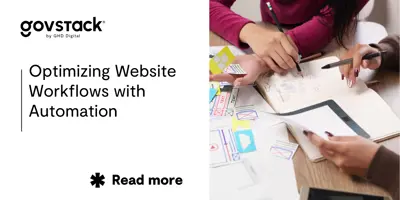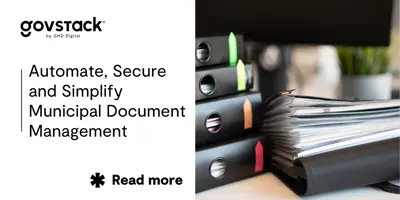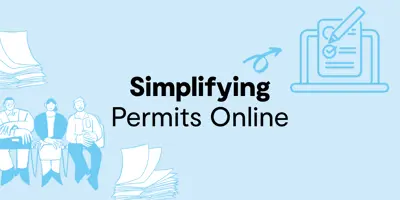
Download the free 2025 Accessible PDF Compliance Checklist to ensure your documents meet ADA Title II, Section 508, and WCAG 2.1 Level AA standards. Step-by-step guidance for marketers, designers, and content creators—make your PDFs inclusive and compliant today.

Cities are shifting more of their public services online to make things easier and faster for residents. These platforms help link departments, simplify processes, and keep information consistent and easy to access.

As governments modernize their digital services, managing workflows across departments—especially within website content management systems (CMS)—becomes increasingly complex. From approvals to content reviews, automation is key to delivering timely, accurate information to citizens.

By shifting away from scattered workflows and toward smarter tools, local governments can make public records easier to handle while setting a higher standard for responsiveness. When systems work better, people notice, and that helps everyone serve their communities with more confidence.

Bad form submissions turn into double work. When a request comes in missing key details, someone on your team has to track down the person and get the right info. That means phone calls, emails, or resubmissions that eat up hours each week.

Public offices use a lot of paper. Paper forms for permits, service requests, registrations, meetings, and more pile up quickly. The result is storage rooms full of old files, delays in process handling, and confusion when documents go missing. But there's a better way. With smarter tools available today, local governments have more options to move beyond paper and provide quicker, cleaner, and more reliable services to their communities.

By simplifying access to meeting details, agendas, and videos, local governments empower residents to stay informed and involved. Learn key features and best practices that make civic participation easier, more inclusive, and more impactful.

By digitizing the process, cities can reduce paperwork, improve accessibility, and create a smoother experience for both staff and residents. Learn practical steps and solutions to implement a system that’s secure, inclusive, and built for the future.


Public sector IT and Communications professionals often face the tempting proposition of building their municipal websites in-house. The appeal is understandable, however, the reality often differs significantly from these initial expectations.